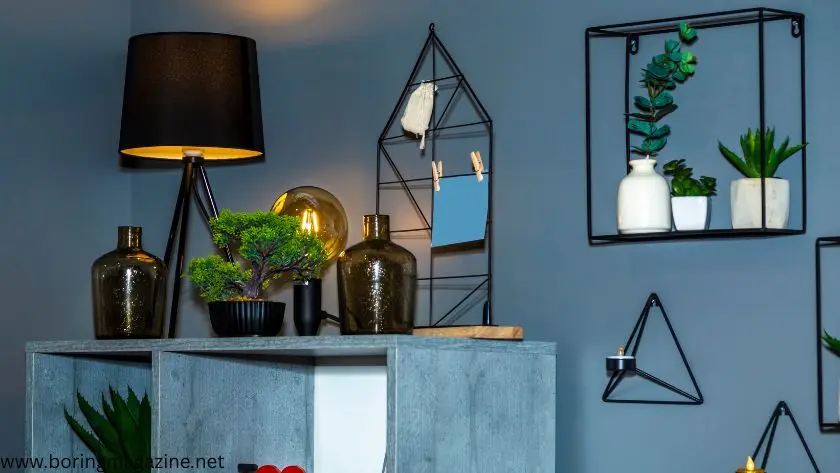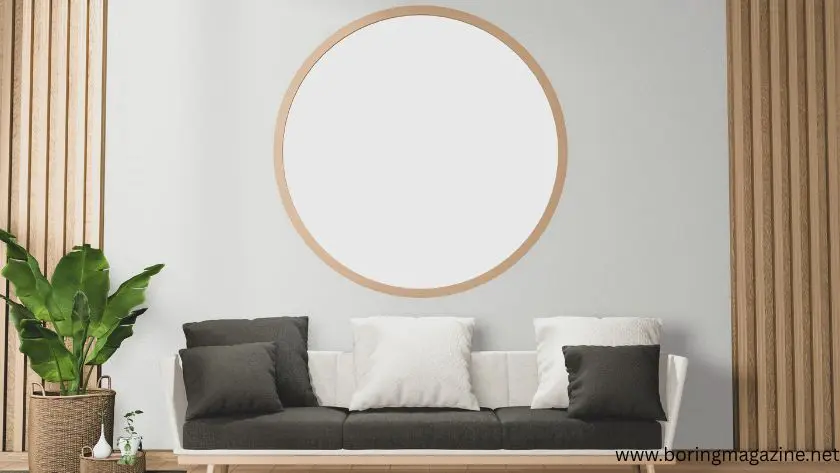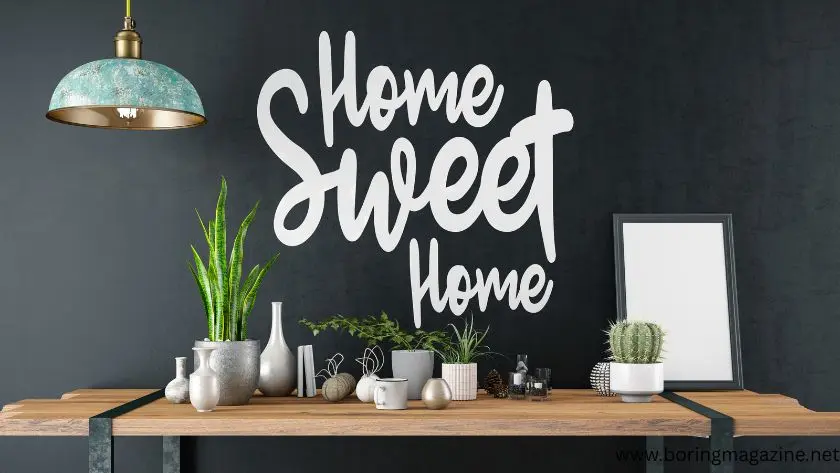Creating a home that is both visually appealing and technologically advanced is no longer a distant dream. With the rise of “decoradtech,” you can bring together the best of interior design and smart home gadgets without compromising on either. If you’ve been wondering how to make your home both smart and stylish, you’re in the right place.
What is Decoradtech?
In simple terms, decoradtech is the blend of home decor and smart technology. It’s about making your space look good while also packing it with clever features that improve your everyday life. We’re not just talking about smart bulbs or security cameras we’re talking about devices that fit your aesthetic and become part of your home’s identity.
Think digital photo frames that rotate your favorite memories, speakers that double as decorative items, and mirrors that show you the weather forecast. Gone are the days when technology meant clunky black boxes and endless cords. Today, tech can be sleek, minimalist, and even artistic.

Why Choose Decoradtech for Your Home?
So, why go through all the trouble to blend tech and decor? Simple: it elevates both form and function. Your home becomes a seamless space that’s efficient, welcoming, and visually harmonious. No more choosing between that trendy lamp and a smart light.
Decoradtech is for people who love gadgets but don’t want their homes to look like tech stores. It caters to your lifestyle while enhancing your home’s personality. Studies have shown that a well-organized, aesthetically pleasing home can reduce stress and promote a sense of well-being. When your environment is smart and calm, you feel better in it.
I saw this transformation myself when my tech-loving friend Jake realized his apartment looked more like a gadget warehouse. After visiting my place and seeing how the tech blended in with the decor, he redid his whole living room now it’s smart and cozy.
Step-by-Step: How to Set Up Home Decoradtech
Let’s break this down into manageable steps so you can get started without getting overwhelmed.
Step 1: Assess Your Needs & Lifestyle
Before buying anything, take a moment to reflect on how you use your home. What are the daily pain points that could be solved with smart technology? Do you keep forgetting to turn off the lights? Do you struggle with bad lighting during Zoom calls?
Make a list of your daily routines and see where smart devices could help. For example, I added motion-sensor lights in my hallway to solve the constant fumbling in the dark. A friend who loves cooking installed a smart display for recipes that fits perfectly with his kitchen backsplash.

Step 2: Set a Realistic Budget
One of the biggest misconceptions is that you need to spend a fortune to have a smart home. Not true. Start with a set budget and prioritize one room or one type of tech, maybe lighting or security.
You can always expand later. When I began, I spent $500 on my living room setup and added other rooms over time. Spread it out, look for sales, and focus on quality over quantity. And don’t forget to factor in any monthly subscriptions or installation fees.
Step 3: Choose Compatible Devices
Compatibility is key. Different smart home devices speak different “languages” like Zigbee, Z-Wave, or Matter. Choose a main system, Amazon Alexa, Google Home, or Apple HomeKit, and ensure your devices can connect easily.
Buying gadgets that don’t sync with each other is a common mistake. My neighbor Tom bought several smart devices without checking if they were compatible. He ended up with five apps and a lot of frustration. Learn from his mistake!
Step 4: Match Technology with Your Aesthetic
This is where decoradtech shines. Don’t just settle for plain black devices. Today, you can find gadgets in a variety of styles, colors, and finishes. Whether your home is modern, rustic, boho, or industrial, there are tech products to match.
Try these tips:
- Use fabric covers for smart speakers that match your pillows
- Mount digital frames that double as artwork
- Tuck away routers and hubs inside decorative boxes
- Choose multi-functional furniture that includes charging stations or hidden storage for tech
- Hide cords using creative moldings or cable covers
For instance, my sister turned her tiny bohemian apartment into a smart haven with tech hidden in plain sight. Her speakers look like vases, and her digital picture frames show her vacation photos.
Step 5: Automate Your Daily Routine
Once your devices are installed, set up routines and automations. This is where your home starts feeling truly smart. Start small, like a morning routine that turns on lights and plays your favorite playlist.
I created several automations, including a “Movie Night” setting that dims the lights, turns on the TV, and even gets the popcorn machine going. Automations save time and make everyday activities a lot smoother.
A few automation tips:
- Test each gadget manually before linking them
- Avoid overlapping routines that might cause glitches
- Always keep manual controls as a backup
- Create guest-friendly commands for visitors unfamiliar with your setup
Even my skeptical partner got hooked after I set up a routine that started her favorite playlist, turned on the coffee maker, and gently lit the living room when she said, “Good morning.”
Step 6: Placement is Everything
Where you place your smart devices can make or break your setup. Good looks and good signal need to go hand in hand. Don’t tuck your smart hub into a metal cabinet or stuff your mesh Wi-Fi in a drawer.
Consider this when placing devices:
- Keep hubs elevated and in central spots
- Avoid obstructions that block signals
- Think about acoustics for smart speakers
- Hide but don’t bury routers, sensors, or smart assistants
A friend of mine kept wondering why his devices kept disconnecting. Turns out, his router was hidden behind a metal sculpture. A quick switch to an open shelf fixed everything.

Bonus Decoradtech Tips
Here are some extra ways to personalize and level up your setup:
- Use picture frame mounts for wall tablets to double as smart hubs
- Try color-changing bulbs to suit your mood or the season
- Add decorative smart plugs to old-school lamps
- Explore decorative cable covers that match your trim or baseboards
- Look into hidden or flush-mounted ceiling speakers
- Try smart planters that also track soil moisture
- Use a smart mirror that displays info only when needed
For more creative inspiration, check out the Home Hacks Decoradtech or TechoElite Smart Home guide. These little upgrades not only enhance function but also keep your space cohesive and beautiful.
Final Thoughts
Setting up decoradtech isn’t just about buying gadgets. It’s about creating a home that works for you while still feeling like your space.
Start small, focus on what matters most to your lifestyle, and build gradually. The goal isn’t to make your home look like a sci-fi movie set it’s to make it feel smarter, more comfortable, and uniquely yours.
FAQs
What is decoradtech in home design?
Decoradtech is the fusion of home decor and smart technology. It means integrating devices like smart speakers, digital frames, and smart mirrors into your home in a way that complements your interior design style.
How do I start setting up decoradtech in my home?
To set up decoradtech in your home, start by assessing your daily routines and tech needs. Then choose smart devices that match your aesthetic, ensure compatibility (like Alexa or Google Home), and begin with one room at a time to stay within budget.
What are the best decoradtech gadgets for small spaces?
Some top decoradtech gadgets for small homes include digital picture frames, smart lights with color-changing options, multi-use smart speakers, and compact wall-mounted hubs. These offer functionality without cluttering your decor.
Can decoradtech work with any interior style?
Yes, decoradtech works with all design styles. Whether your space is rustic, industrial, or Scandinavian, there are smart devices designed to blend in like fabric-wrapped speakers, wood-trimmed displays, and custom-colored light panels.
Is decoradtech expensive to install?
No, decoradtech doesn’t have to break the bank. Many people start with a few smart lights or a smart assistant and build gradually. You can design a beautiful tech-integrated space on a budget by prioritizing compatible, multi-functional devices.



